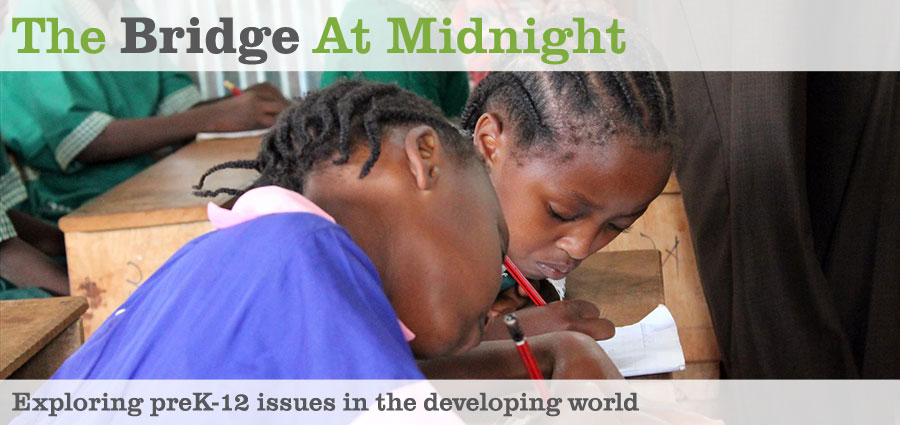Bridge in Wired
Posted: November 13th, 2013 | Author: Michael Goldstein | | No Comments »
Dayo Olopade is the author of The Bright Continent: Breaking Rules and Making Change in Modern Africa.
He writes about Bridge in Wired:
At Bridge Academy Machakos, the school manager when I visited was Teresia Jacob, a 23-year-old university graduate with a bright green Bridge T-shirt and a bright smile to match. Jacob had responsibility for the 45 children and four teachers in Machakos, as well as for selling the school to local parents. The heart of her pitch is simple: Bridge schools teach kids. Whereas the average government primary school has a 47-to-one student-teacher ratio, Bridge’s is 30-to-one — and it teaches students for two additional hours each day.
Read the whole thing here.
One interesting nugget. The author describes a rote class.
My classroom encounter did feel strangely militarized. But academic research continues to find scripted programs effective: After studying an American scripted-learning program called Success for All, a research group at the University of Michigan gave it high marks, saying that the program “appeared to accelerate students’ reading achievement in the early elementary grades.”
I agree that what he saw was undoubtedly rote. But that’s not a Bridge phenomenon. Nor a scripted curriculum phenomenon.
It’s more of a developing world pedagogy. I.e., the government-run schools are even more rote.
The pivot away from that has been tough. Ben Piper, from RTI, has done some excellent work in developing new materials for Kenyan teachers. His stuff is called PRIMR. He has a randomized control trial that shows it works. But even in that context, he told me, it’s hard to move teachers towards a style which has much more “students doing more of the thinking,” since it defies convention.
In this sense, I think scripted curriculum may enable more student-involved classrooms, rather than limit them. Because the script will push a teacher, at least at first, out of her comfort zone.
Our team’s first big effort to drive that sort of change, where kids do more of the work, more of the reading, more answering of the questions, and less teacher-dominated lecture with choral response — that starts January. January will be a referendum on our new approach to Bridge teaching.
If it seems to work in Class 7, we’ll begin to bring it to the younger grades. If it fails, we’ll keep grinding away on the details, trying to get our mix of curriculum, training, and teacher communication to row in the same direction.


Leave a Reply